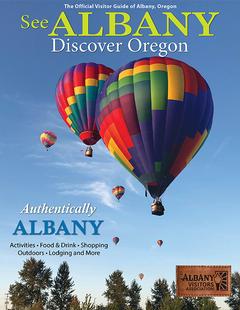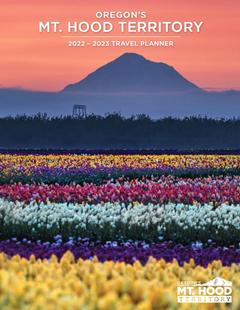Basics
- Location:
- Eastern Oregon through the Wallowa-Whitman National Forest
- Surface:
- Paved
- Length:
- 106 miles (170 km)
- Time:
- 5-7 hours.
- Season:
- Spring through fall, part of Forest Road 73 is closed during the winter
- Fees:
- A few museums charge fees. So do some campgrounds.
Description
The Elkhorn Scenic Byway traverses the quiet Elkhorn Mountains and along several scenic lakes. The history of this area is as rich as its forests and equally filled with intrigue and surprises.
The Elkhorn Scenic Byway starts in Baker City, 300 miles east from Portland. Take HWY 7 south out of Baker City. After about 10 miles, HWY 7 swings and goes west. At Granite, take Forest Road 73 north. After about 10 miles, Forest Road 73 will run east for about 30 miles. Take HWY 30 south to get back to Baker City and the end of the route.
Many gold mining ghost towns and remnants of the Oregon Trail are visible along the drive; the Oregon Trail Interpretive Center in Baker City and the gold-mining ghost town of Granite are both great places to see the human history of this area. Another quaint town along the way is Sumpter, where one can pan for gold, go antiquing, or just talk to one of the 80 permanent residents.
Tourism Resources
Helpful Links
Tourism Resources
Points of Interest
Points of Interest Along The Way
Anthony Lake (OR)
Anthony Lake is much bigger than Grande Ronde Lake, but it's just as serene. Angell Peak staggers above (and on the reflection of) this crystal-clear lake. A breeze always whispers-it's up so high-which makes the easy, lake-circumscribing trail even easier.
Directions
This lake is just after Grande Ronde Lake, on the north end of the byway.
Baker City Historic District (OR)
Of the 110 buildings in the Historic District, 60 have been restored to their original elegance. Some are now banks, bed and breakfasts, and museums, etc. Restorations are continuing; the tall and white 1927 Baker Hotel, (the site of political conventions,) is being redone at the time of this writing (summer 2000).
Baker City was known as the 'Queen City of the Mines,' and by1900, its population was larger than Boise's (at the time.) An excerpt from the Walking Tour Guide: 'Restaurants in fine hotels served superb cuisine…the opera house was frequently filled to capacity…The 1800 block on the east side of Main had five saloons and several brothels. Children and ladies avoided the block, but the Salvation Army band played there nightly, hoping to rescue fallen souls.'
Directions
Baker City is the end and the beginning of the byway. It's on I-84, about 100 miles northwest of Boise.
Eastern Oregon Museum (OR)
Often called 'Grandma's attic,' this museum boasts over 10,000items; an outstanding collection of household, farming, mining, and pioneer artifacts. The old Union Pacific depot is on the grounds;it was donated when the railroad discontinued stops at Haines in1962. There is also a century-old poplar tree from Washington Gulch; a scythe has grown into the tree where a forgetful harvester hung it before the turn of the century.
Directions
On 3rd Street, in Haines (follow the signs)
Grande Ronde Lake (OR)
This is one of those secluded places where the quiet is profound. The crystalline water is edged with glossy, bulky lilypads. The lake rests in acres of luscious meadows. The only motion is of clouds flying overhead, the casting of a fishing line,and dragonflies and butterflies vying for spots on a warm rock.
Directions
Just before Anthony Lake, on the northern leg of the byway.
Granite (OR)
A ghost-town (an old mining town,) Granite only has about 80 permanent residents. This hillside collection of tiny cabins includes a church, a school, a dancehall, a drugstore, and a small cemetery.
Directions
The city is at milepost 44, almost halfway through the byway.
Haines (OR)
Haines is surrounded by farmland, and its street signs are wooden slats with stenciled paint. Main street includes a general store, steakhouse, saloon, post office, and an antique store. There is a charming historic log cabin on the end of Main; it seems to be about the size of a large walk-in closet, but amazingly, it has an upstairs. The Eastern Oregon Museum is in this town.
Directions
Haines is on SR 30, near the end of the byway, about 10 miles north of Baker City.
Oregon Trail Interpretive Center (OR)
Living history demonstrations with an audio background of leather creaking, wagon wheels turning, and migrant voices can make you feel like you are on the trail itself. There are also extensive displays of artifacts, video presentations, historic photos, and outside exhibits. A two-mile trail takes you to see actual wagon ruts.
Directions
The center is 5 miles east of Baker City, off of exit 302.
Oregon Trail Regional Museum (OR)
Built in 1920, 'The Old Nat' ('Natatorium' is a Latin derivative meaning: 'indoor swimming pool') is on the National Register of Historic Places. This was the area's swimming pool for decades. It is now an interesting museum with a natural history focus.
Directions
2480 Grove St. in downtown Baker City. Across street from Geiser Pollman Park.
Sumpter (OR)
Sumpter still looks much like it did in the 1860s, when it was founded during a gold rush; all of the buildings are made of rough-hewn wood. With a population of about 120, this town has a surprising amount of commerce: antique and gift shops, camps where you can pan for gold, a steakhouse, and lodging.
This is where the famous Sumpter Valley Gold Dredge sits, where the Sumpter Valley Railroad runs, and is also known for its hundreds of miles of great snowmobiling.
Directions
This town is about 30 miles to the west of Baker City.
Sumpter Valley Gold Dredge (OR)
The dredge looks like the ghost of a mammoth and strange boathouse. Built in 1935, the Sumpter Valley Gold Dredge mined $4.5 million in gold until it stopped 11 years later. During those years, the dredge worked 24 hours a day, in all kinds of weather.It only stopped on Christmas and Independence Days.
The dredge has moved 2 miles from the place it was built-dredges work by moving along as they extract gold. The dredge is being restored in stages. Right now, there are wooden walkways to go out to the dredge (it stands in a pond) and a few interpretive signs. There is even a button you can push to hear a recording of a worker telling stories about the dredge over the roar of the machine in operation.
Directions
The dredge is in Sumpter, and very easy to find.
















